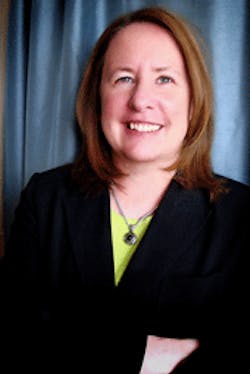February 27, 2013
President Barack Obama recently pushed for increased energy efficiency in his State of the Union address. His endorsement is a plus, no argument. But it may not be the federal government that drives the industry’s next growth spurt.
Increasingly, the push for clean energy seems to be more grassroots, from the city and community.
Consider these significant green energy trends and events.
- Cities increasingly require that building owners evaluate and report on how well their commercial properties use energy. Officials say the results will help government create better policy. The information also is valuable in real estate transactions. Buyers get a better sense of a building’s true value. And owners of green buildings may use the information as a marketing tool when renting or selling the property. Minneapolis is the latest city to enact a reporting and disclosure rule. Public buildings must comply this year and the largest private buildings in 2014. Other cities with similar requirements are Boulder, Seattle, New York City, San Francisco, Austin, Washington, D.C. and Philadelphia.
- Massachusetts, the top US state for energy efficiency and a thriving market for solar, is building its reputation community by community through a law enacted in 2008 known as the Green Communities Act. While the law has many components, a key feature is its community grant program. Cities and towns become eligible for grants if they agree to lower energy use 20 percent within five years. Communities also must streamline permitting for green energy projects, and take other action meant to keep more of the state’s energy revenues within its borders. Massachusetts is trying to become greener and more efficient in part because it makes economic sense. About 80 percent of the state’s energy dollars are paid out to places like South America, Canada, and the Middle East, the sources of its fuel. State officials call this an $18 billion “lost economic opportunity.” The state wants to recirculate more of the money within its own borders “through investments in home-grown renewable energy and energy efficiency projects.” Municipalities seem to like the program. So far, 110 have signed on, representing 45.2 percent of the state’s population.
- Following Superstorm Sandy, New York City is looking to develop microgrids – smaller, more locally focused energy systems that operate closer to the user, more of a neighborhood operation. Utility officials can isolate a microgrid during a storm, walling it from cascading failures occurring on the larger electric grid. The NYS2100 Commission, set up by Governor Andrew Cuomo to find ways to ready the state for future storms, recommended the state develop incentives to encourage creation of microgrids. Connecticut is pushing microgrid development for similar reasons. The Department of Energy and Environmental Protection has been evaluating 36 projects and plans to award about $15 million to move the best of them forward. Governor Dannel Malloy wants to spend an additional $30 million over the next two years on microgrids.
- More and more local communities are building solar gardens, offering the benefits of solar to renters, those with shaded roofs, or who face other obstructions to solar installation – an estimated 75 percent of the US population. (See this blog for more details.)
Why is the city, town and community increasingly the force behind clean and efficient energy?
I recently interviewed Rob Thornton, president at International District Energy Association, while preparing this year’s guidebook on combined heat and power, published by PennWell. He offered an interesting insight.
Much like banking, the power industry has been undergoing consolidation in recent years – mergers and acquisitions and takeovers by national and international energy companies. In many places the hometown utility is no more. As a result, city officials have little sway over the shape of their electricity system.
“Mayors used to have a direct relationship with the leadership of the investor-owned utility. That person is now three states away. Mayors are recognizing that they don’t have the same reach or leverage or engagement that they used to have,” Thornton said.
As a result, mayors and city leaders increasingly believe it is their responsibility to bring clean energy to their cities. They feel compelled to act, sometimes through organizations like C-40 Cities, a network of megacities worldwide working to reduce greenhouse gas emissions. “It is a trend that we really see emerging,” Thornton said.
This trend is good for clean energy in many ways. Decisions made close to home evoke less not-in-my-back-yard opposition to new infrastructure. Locals develop a sense of ownership in energy projects, and therefore are more likely to support than oppose them.
So while it is good news that clean energy and energy efficiency are getting attention from the highest office holder in the US, the industry also stands to gain from the home team. Enlightening the mayor and the city council about the benefits of efficiency may prove as important as winning support from the President and Congress.
About the Author
Elisa Wood
Editor-in-Chief
Elisa Wood is the editor and founder of EnergyChangemakers.com. She is co-founder and former editor of Microgrid Knowledge.
